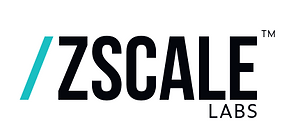
The Power of Higher Dimensions: Revolutionizing Computing with HDC
Oct 19
3 min read
0
2
0
Introduction
Higher dimensional computing, particularly Hyperdimensional Computing (HDC), is emerging as a powerful alternative to traditional lower dimensional methods. This innovative paradigm is not just a theoretical concept but a practical solution being implemented by cutting-edge companies like Zscale Labs™. Let's explore how higher dimensional computing compares to its traditional counterpart and why it's generating excitement in the tech world.
Understanding Dimensional Computing
To grasp the significance of higher dimensional computing, we must first understand the concept of dimensionality in data processing. Traditional computing typically operates in lower dimensional spaces, dealing with data represented by a relatively small number of features or attributes. This approach has been the backbone of computing for decades, powering everything from simple calculations to complex machine learning algorithms.
However, as we face increasingly complex problems and larger datasets, the limitations of lower dimensional computing become apparent. Enter higher dimensional computing, a paradigm that operates in spaces with thousands or even tens of thousands of dimensions.
The Rise of Hyperdimensional Computing (HDC)
At the forefront of higher dimensional computing is Hyperdimensional Computing (HDC). This brain-inspired approach leverages high-dimensional vectors, typically with dimensions in the range of 10,000 or more, to represent and process information. HDC draws inspiration from the way the human brain operates, using distributed representations and massive parallelism to achieve remarkable computational feats.
"The shift towards higher dimensional computing represents more than just a technical advancement; it's a fundamental reimagining of how we process and understand information... We're paving the way for a new era of intelligent systems that can adapt, learn, and solve problems in ways that were previously unimaginable."
Key Advantages of Higher Dimensional Computing
Enhanced Pattern Recognition: The high-dimensional space in HDC allows for superior pattern recognition capabilities. Complex relationships that might be difficult to discern in lower dimensions become more apparent and easier to analyze in higher dimensions.
Robustness and Error Tolerance: One of the most striking features of HDC is its inherent robustness. The "blessing of dimensionality" means that high-dimensional representations are more resilient to noise and errors, a crucial advantage in real-world applications where data is often imperfect.
Efficiency in Computation: Despite operating in higher dimensions, HDC can be computationally efficient. It relies on simple vector operations like element-wise additions and dot products, which can be parallelized effectively.
Adaptability and Learning: HDC systems demonstrate remarkable adaptability, capable of learning and evolving in real-time. This mirrors the cognitive flexibility of the human brain, allowing for more intuitive problem-solving.
Energy Efficiency: Higher dimensional computing, particularly when implemented in hardware, can achieve significant energy savings compared to traditional computing methods. This makes it especially suitable for edge computing and resource-constrained environments.
Comparing HDC to Traditional Computing
While traditional lower dimensional computing has served us well, HDC offers several distinct advantages:
Representation Power: HDC can capture and manipulate more complex relationships within data. Where traditional methods might struggle with high-dimensional data, HDC thrives.
Scalability: As the complexity of problems increases, HDC scales more effectively than traditional methods. The high-dimensional space provides ample room for representing intricate data structures and relationships.
Noise Handling: In real-world scenarios, data is often noisy or incomplete. HDC's inherent robustness makes it better suited for handling such imperfections without significant loss of accuracy.
Biological Plausibility: HDC's approach aligns more closely with our understanding of how the human brain processes information, potentially leading to more intuitive and human-like AI systems.
Hardware Implementation: The simplicity of HDC operations makes it well-suited for implementation in specialized hardware, potentially leading to significant performance gains and energy savings.
Also see:
Zscale Labs™: Pioneering Higher Dimensional Computing
Zscale Labs™ is at the forefront of NSAI research and application. The company leverages NSAI in conjunction with Hyperdimensional Computing (HDC) to develop advanced AI solutions across various industries. One notable application is in medical imaging, where Zscale Labs™ has introduced Neuromorphic AI for multi-label Chest X-Ray classification.

This technology combines neural networks with symbolic reasoning to enhance diagnostic accuracy and efficiency in healthcare settings.
Read more here at Zscale Labs™
The Future of Computing: Higher Dimensions Ahead
The shift towards higher dimensional computing represents more than just a technical advancement; it's a fundamental reimagining of how we process and understand information. By mirroring the brain's approach to information processing, we're not just creating more powerful computers – we're paving the way for a new era of intelligent systems that can adapt, learn, and solve problems in ways that were previously unimaginable.
***
Join the LinkedIn Hyperdimensional Computing (HDC) Group! https://www.linkedin.com/groups/14521139/
***
Citations:
• https://www.zscalelabs.com/why-choose-us
• https://www.nature.com/articles/s41928-020-0410-3
• https://biz.prlog.org/ZscaleLabs/
• https://arxiv.org/pdf/2207.12932.pdf
• https://www.csl.cornell.edu/~zhiruz/pdfs/hdc-neurips2022.pdf
• https://www.techopedia.com/definition/hyperdimensional-computing-hdc
#HigherDimensionalComputing #HyperdimensionalComputing #AI #MachineLearning #DataProcessing #PatternRecognition #Robustness #ComputationalEfficiency #AdaptiveLearning #EnergyEfficiency #NeuromorphicAI #EdgeComputing #BrainInspiredComputing #DataAnalysis #ArtificialIntelligence #FutureOfComputing #InnovativeTechnology #ComputerScience #CognitiveComputing #ParallelProcessing #ErrorTolerance #ScalableComputing #RealWorldApplications #IntelligentSystems #AdvancedAlgorithms #DataRepresentation #ComputationalNeuroscience #EmergingTechnology #HighDimensionalData #AdaptiveAI #ZscaleLabs #NeuroSymbolicAI #AI #NSAI #NeuromorphicAI #HyperdimensionalComputing #HDC







